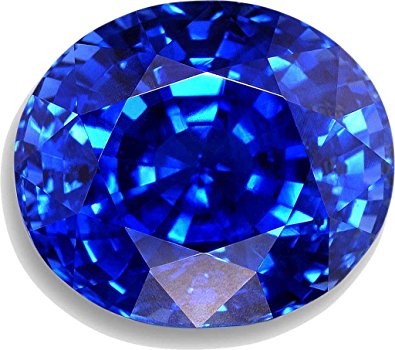Good-bye, Silica & Hello, Sapphire
The fiber optics technology is one of the key players in revolutionizing digital information processing and transmission. It is the very reason why we are able to make extensive digital transformation in a very short time. Silica made of fiber optics has been possible for the longest time, but it seems that there is another material that may end silica's reign as the main material for fiber optics production. And it's none other than the gemstone sapphire.
Under Pressure
Since the digital information has gotten bigger and heavier, digital processing and transmission now require faster time and higher efficiency. And silica may not be up for the challenge anymore. According to a group of researchers from Clemson University in South Carolina, The United States, the silica in older systems is starting to break down under pressure.
And because much is demanded of fiber optics now, there is a need for a more robust material to create fibers. This is where sapphire comes in, because fibers made from sapphire have excellent mechanical strength, hardness, corrosion resistance, and a high melting point (2050ºC ).
What are the properties of sapphire that makes it a good substitute for silica?

Image source: Google
Saphire is the most popularly known as a gemstone, but it is also a promising alternative material in the production of fiber optics.
Sapphire Issues
However, there are also drawbacks in using sapphire, including its cost and high optical attenuation. Having a high optical attenuation means that it can severely weaken the light signals, a problem that is addressed by employing external cladding structures that may moderate the light transmission losses. A team of researchers from the College of Nanoscale Science and Engineering(CNSE) at the University of Albany, State University of New York in the United States devised a method to ensure that the cladding structures can be as sturdy as the sapphire fibers.
Another big issue that has to be dealt with is the fact that sapphire fibers are not easy to make. As a matter of fact, it is very tricky and quite challenging to transform sapphire crystals into fibers. According to the researchers from Clemson University, sapphire does not have the glass transition state between solid and transition state between solid and liquid, which makes it hard to weave into fibers. But they were able to address this issue by using thicker glass to be used as encasement.
Aside from digital processing and transmission, sapphire fibers also present promising applications in medical imaging as well as laser delivery in medicine.
I hope you guys find my post interesting. Feel free to comment down below for some questions related to the subject. Suggest if you have to, It will be very much appreciated.
@markothegreat

great post dong keep it ip :)
Thank yiu kuya :)
Congratulations @markothegreat! You have completed some achievement on Steemit and have been rewarded with new badge(s) :
Click on any badge to view your own Board of Honor on SteemitBoard.
For more information about SteemitBoard, click here
If you no longer want to receive notifications, reply to this comment with the word
STOPNice bro
Thank you very much for appreciating Bro :)
migoo!!na resteem na tka migo...bounce back nea ha.hihi